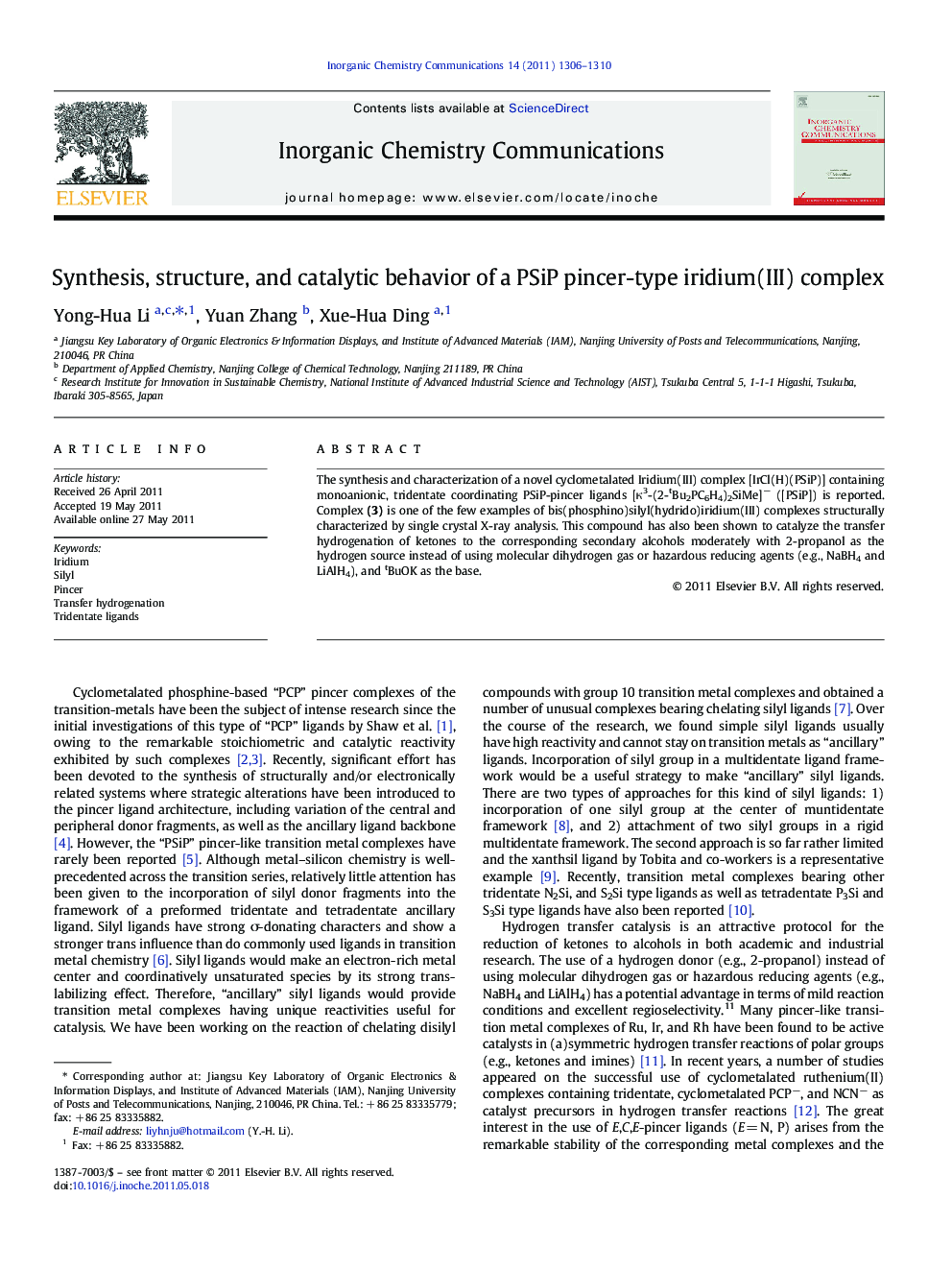| Article ID | Journal | Published Year | Pages | File Type |
|---|---|---|---|---|
| 1302654 | Inorganic Chemistry Communications | 2011 | 5 Pages |
The synthesis and characterization of a novel cyclometalated Iridium(III) complex [IrCl(H)(PSiP)] containing monoanionic, tridentate coordinating PSiP-pincer ligands [κ3-(2-tBu2PC6H4)2SiMe]− ([PSiP]) is reported. Complex (3) is one of the few examples of bis(phosphino)silyl(hydrido)iridium(III) complexes structurally characterized by single crystal X-ray analysis. This compound has also been shown to catalyze the transfer hydrogenation of ketones to the corresponding secondary alcohols moderately with 2-propanol as the hydrogen source instead of using molecular dihydrogen gas or hazardous reducing agents (e.g., NaBH4 and LiAlH4), and tBuOK as the base.
Graphical abstractThe synthesis and characterization of a novel cyclometalated Iridium(III) complex [IrCl(H)(PSiP)] (3) containing monoanionic, tridentate coordinating PSiP-pincer ligands [κ3-(2-tBu2PC6H4)2SiMe]− ([PSiP]) is reported. Complex (3) is one of the few examples of bis(phosphino)silyl(hydrido)iridium(III) complexes structurally characterized by single crystal X-ray analysis. This compound has also been shown to catalyze the transfer hydrogenation of ketones to the corresponding secondary alcohols moderately with 2-propanol as the hydrogen source instead of using molecular dihydrogen gas or hazardous reducing agents (e.g., NaBH4 and LiAlH4), and tBuOK as the base.Figure optionsDownload full-size imageDownload as PowerPoint slideHighlights► A novel cyclometalated Ru(II) complex. ► The first example of halogenated Ru(II) complexes supported by (cyclohexylphosphino)silyl ligand. ► Catalyst for the transfer hydrogenation of ketones to alcohols.
